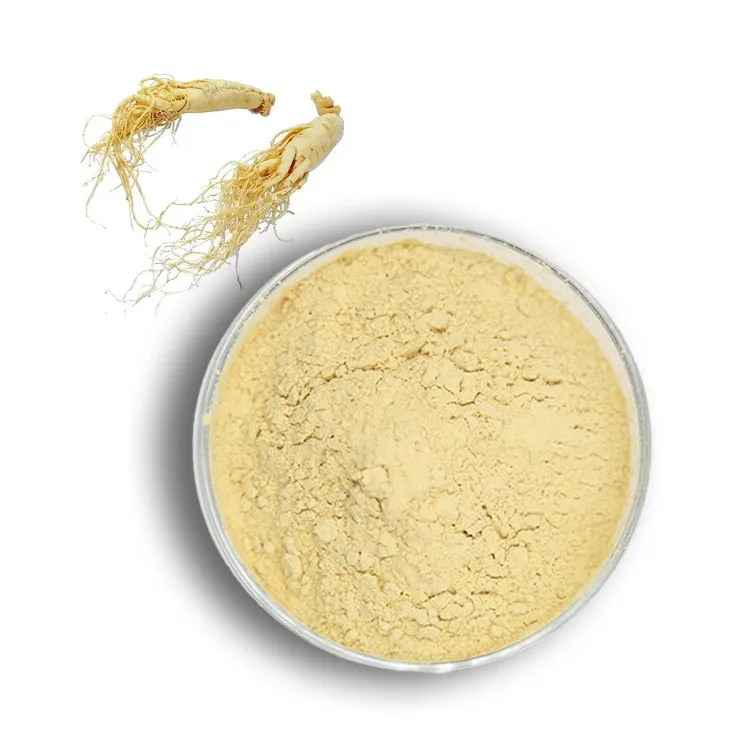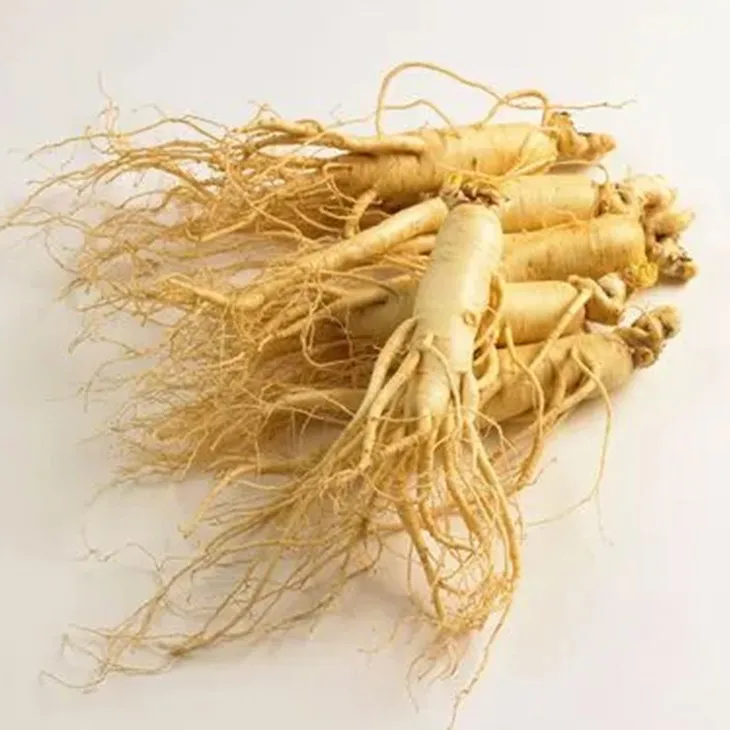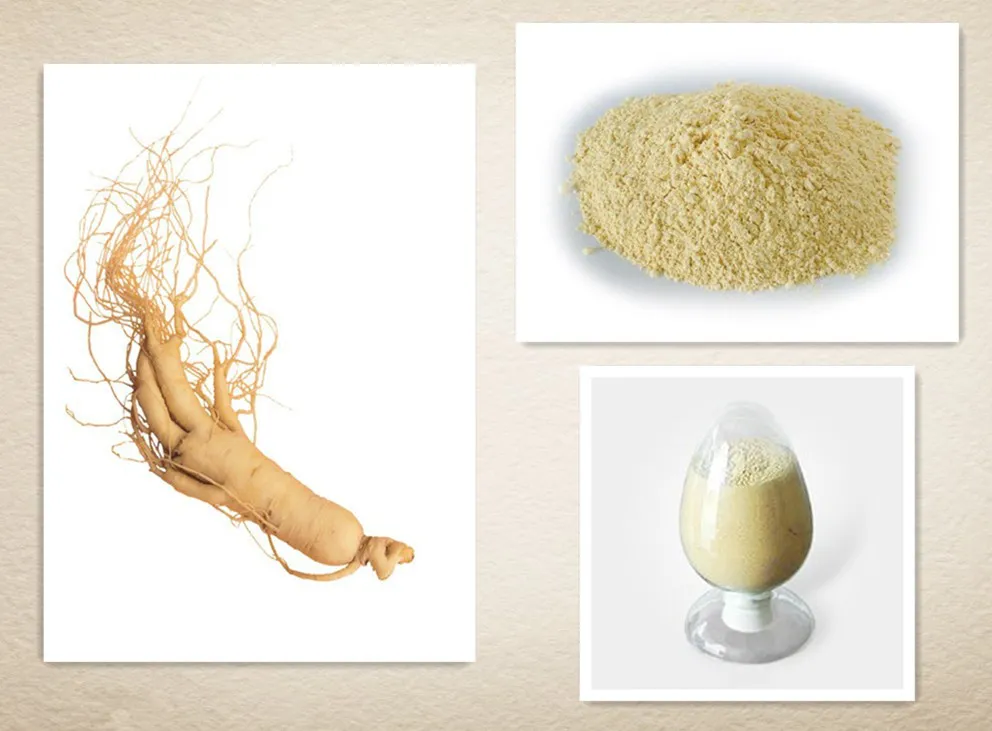- 0086-571-85302990
- sales@greenskybio.com
Ginseng Root Extract: China vs. the United States
2024-11-26

1. Introduction
Ginseng has been highly regarded in both China and the United States for its potential health benefits. Ginseng Root Extract, in particular, has drawn significant attention in the global market. China, with its long - standing traditional medicine history, and the United States, with its advanced scientific research and commercial acumen, approach Ginseng Root Extract from different perspectives. This article aims to compare the Ginseng Root Extract in these two countries, including the factors influencing its quality, availability, and potential health benefits.

2. China's Ginseng Root Extract
2.1 Ancient Knowledge
In China, ginseng has been used in traditional medicine for thousands of years. Ancient Chinese medical texts such as "Shennong Ben Cao Jing" (The Divine Farmer's Materia Medica) have detailed records about ginseng. Chinese traditional medicine believes that ginseng has the functions of tonifying qi (vital energy), strengthening the spleen, benefiting the lung, and calming the nerves. This long - standing knowledge has been passed down through generations, and it forms the basis for modern Chinese research and extraction of ginseng root extract.
2.2 Extraction Techniques
China has developed a variety of extraction techniques for ginseng root extract. One common method is water - extraction. In this process, ginseng roots are soaked in water and then heated for a certain period to extract the active ingredients. Another method is alcohol - extraction, which uses alcohol as a solvent to extract substances such as ginsenosides more effectively. Chinese researchers also often combine modern extraction technologies with traditional methods to improve the extraction efficiency and quality of ginseng root extract.
2.3 Quality and Availability
- The quality of Chinese ginseng root extract is highly influenced by the origin of ginseng. Changbai Mountain ginseng in China is famous for its high quality. The soil, climate, and altitude in this area are conducive to the growth of ginseng, which in turn affects the quality of the extract.
- China has a large - scale ginseng cultivation industry, which ensures a relatively stable supply of ginseng roots for extraction. However, due to the high demand for high - quality ginseng in both domestic and international markets, the availability of top - notch ginseng root extract may still be limited in some cases.
2.4 Potential Health Benefits
Based on traditional Chinese medicine theories and some modern research, Chinese ginseng root extract is believed to have several potential health benefits. For example, it may help improve the immune system, enhance physical strength and endurance, and relieve stress. Some studies have also shown that it may have certain effects on regulating blood sugar and blood pressure.

3. United States' Ginseng Root Extract
3.1 Scientific Perspective
In the United States, scientific research on ginseng root extract is mainly focused on understanding its chemical composition and biological activities at a molecular level. American researchers have carried out in - depth studies on the active ingredients in ginseng, especially ginsenosides. They use advanced analytical techniques such as high - performance liquid chromatography (HPLC) to accurately identify and quantify the components in ginseng root extract.
3.2 Commercial Perspectives
- The United States has a well - developed commercial system for ginseng root extract. American companies are good at marketing ginseng products. They package ginseng root extract into various forms such as capsules, tablets, and tinctures to meet the different needs of consumers.
- However, compared with China, the United States has a relatively smaller scale of ginseng cultivation. Most of the ginseng used for extraction is imported, which may affect the cost and availability of ginseng root extract in the US market.
3.3 Quality and Availability
- The quality of American Ginseng Root Extract is also closely related to the source of ginseng. American ginseng, which is mainly grown in the Appalachian region, has its own characteristics in terms of chemical composition. The extraction process in the US is strictly regulated by relevant laws and regulations to ensure product quality.
- Due to the large - scale import and commercial processing, the availability of ginseng root extract in the US market is relatively high. However, the price may be affected by factors such as import costs and brand premiums.
3.4 Potential Health Benefits
American scientific research has also explored the potential health benefits of ginseng root extract. Some studies suggest that it may have antioxidant properties, which can help protect cells from oxidative damage. It may also play a role in improving cognitive function and reducing the risk of certain chronic diseases.

4. Comparison of Factors Influencing Quality
- Origin of Ginseng: In China, the origin such as Changbai Mountain has a significant impact on the quality of ginseng root extract. In the United States, American ginseng from the Appalachian region also determines the characteristics of the extract. Different origins lead to differences in soil, climate, and growth environment, which ultimately affect the content and proportion of active ingredients in the extract.
- Extraction Process: Chinese extraction techniques combine traditional and modern methods. In the United States, advanced scientific equipment and strict regulatory requirements are emphasized in the extraction process. The extraction methods and process control in both countries are important factors influencing the quality of ginseng root extract.

5. Comparison of Availability
- China has a large domestic cultivation base, but high - quality ginseng root extract may still be in short supply due to high demand. In the United States, although the domestic cultivation scale is relatively small, the well - developed commercial system and large - scale imports ensure a relatively high availability in the market.
- The price of ginseng root extract in both countries is also affected by availability. In China, the price may be affected by factors such as the rarity of high - quality ginseng. In the United States, import costs and brand marketing play important roles in price determination.

6. Comparison of Potential Health Benefits
- Both Chinese and American research have found that ginseng root extract may have beneficial effects on the immune system, physical strength, and stress relief. However, due to differences in research methods and focuses, there may be some differences in the understanding of specific health benefits.
- For example, Chinese traditional medicine emphasizes more on the overall regulation of the body, while American research may focus more on the molecular - level mechanisms of specific health benefits. Future research may further clarify and integrate these differences.
7. Conclusion
In conclusion, both China and the United States have their own characteristics in ginseng root extract. China's long - standing traditional knowledge and extraction techniques, as well as the influence of the origin of ginseng on quality, are important features. The United States' scientific research and commercial operation also have their own advantages. Understanding the differences and similarities between the two countries in ginseng root extract can help promote further research, development, and international cooperation in this field, and also provide consumers with more comprehensive and accurate information when choosing ginseng root extract products.
FAQ:
Question 1: What are the main differences in the extraction techniques of ginseng root extract between China and the United States?
In China, traditional extraction techniques often draw on ancient knowledge and methods that may have been passed down for centuries. These can include water - based extraction methods that aim to preserve the holistic properties of ginseng. In the United States, there is more of a focus on modern scientific extraction techniques. For example, the use of advanced chemical solvents and high - tech equipment to isolate specific compounds from ginseng root. This difference is due to China's long - standing traditional medicine heritage compared to the US's more science - and technology - driven approach in the commercial and research sectors.
Question 2: How does the quality of ginseng root extract vary between China and the United States?
The quality of ginseng root extract in both countries can be influenced by different factors. In China, the quality can depend on the variety of ginseng used (such as Panax ginseng), the region of cultivation (as different regions may have different soil and climate conditions affecting the ginseng's growth), and the traditional processing methods. In the United States, quality may be more closely related to standardized cultivation practices and strict regulatory requirements in the commercial production of ginseng products. However, both countries have high - quality ginseng root extract products, but the evaluation criteria may vary slightly due to different cultural and industrial backgrounds.
Question 3: What are the factors influencing the availability of ginseng root extract in China and the United States?
In China, the availability of ginseng root extract is influenced by factors such as the large domestic demand for traditional Chinese medicine, which includes ginseng - based products. The long - term cultivation of ginseng in China also ensures a certain amount of supply. In the United States, availability may be affected by the scale of commercial cultivation, which is relatively smaller compared to China in some cases. Additionally, import and export regulations, as well as market trends in the health - supplement industry, can impact the availability of ginseng root extract in both countries.
Question 4: Are there different potential health benefits emphasized for ginseng root extract in China and the United States?
In China, within the framework of traditional Chinese medicine, ginseng root extract is often associated with enhancing qi (vital energy), improving overall vitality, and strengthening the body's resistance. In the United States, research may focus more on specific, measurable health benefits such as its potential role in reducing stress, improving cognitive function, or enhancing immune responses from a more Western medical perspective. However, there is also an increasing amount of cross - over research looking at the traditional health claims in a scientific context in both countries.
Question 5: How do regulatory frameworks for ginseng root extract differ between China and the United States?
In China, ginseng root extract as a part of traditional Chinese medicine is regulated by the relevant traditional medicine regulatory authorities. There are regulations regarding its cultivation, processing, and quality standards to ensure its safety and efficacy in line with traditional medical concepts. In the United States, ginseng root extract is mainly regulated as a dietary supplement. The Food and Drug Administration (FDA) has certain regulations on its production, labeling, and safety, but the requirements are different from those of drugs. This difference in regulatory frameworks reflects the different positions of ginseng root extract in the medical and health systems of the two countries.
Related literature
- Ginseng in Chinese Medicine: History, Preparation, and Therapeutic Uses"
- "The American Ginseng Industry: Cultivation, Marketing, and Research"
- "Comparative Analysis of Traditional and Modern Extraction Methods of Ginseng Root Extract"
- "Health Benefits of Ginseng: A Global Perspective"
- ▶ Hesperidin
- ▶ Citrus Bioflavonoids
- ▶ Plant Extract
- ▶ lycopene
- ▶ Diosmin
- ▶ Grape seed extract
- ▶ Sea buckthorn Juice Powder
- ▶ Fruit Juice Powder
- ▶ Hops Extract
- ▶ Artichoke Extract
- ▶ Mushroom extract
- ▶ Astaxanthin
- ▶ Green Tea Extract
- ▶ Curcumin
- ▶ Horse Chestnut Extract
- ▶ Other Product
- ▶ Boswellia Serrata Extract
- ▶ Resveratrol
- ▶ Marigold Extract
- ▶ Grape Leaf Extract
- ▶ New Product
- ▶ Aminolevulinic acid
- ▶ Cranberry Extract
- ▶ Red Yeast Rice
- ▶ Red Wine Extract
-
Natural grape seed extract
2024-11-26
-
Horse Chestnut Extract
2024-11-26
-
Red Wine Extract
2024-11-26
-
Black Pepper Extract
2024-11-26
-
Lycopene
2024-11-26
-
Clove Powder
2024-11-26
-
Grapefruit Seed Extract Powder
2024-11-26
-
Ginseng Root Extract
2024-11-26
-
Kidney Bean Extract
2024-11-26
-
Hops Extract
2024-11-26




















